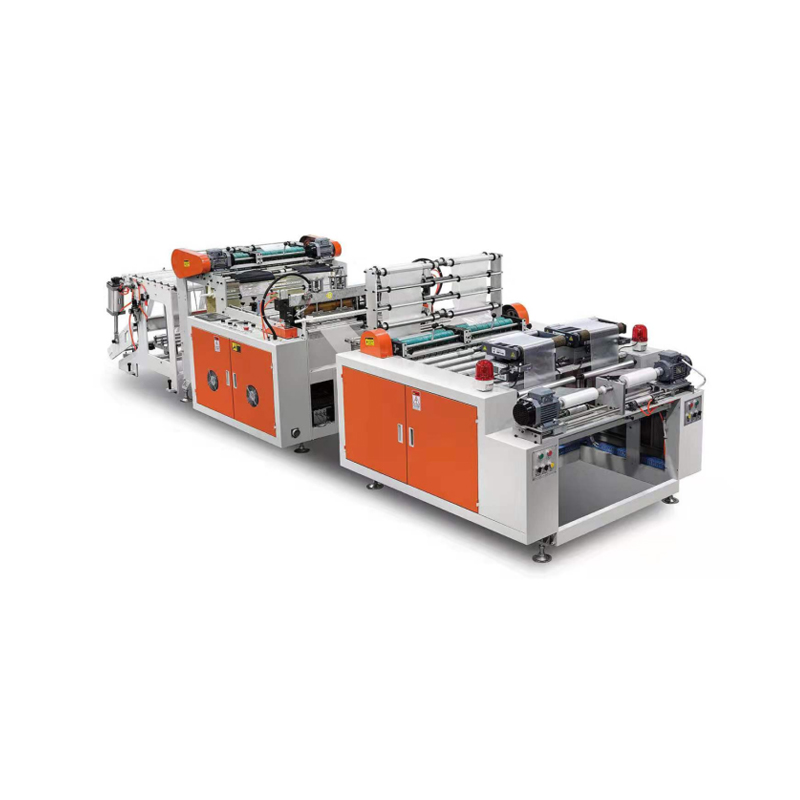Continuous Roll Bag Making Machines Set the Pace for High-Efficiency Packaging Production
 By Admin
By Admin
As global packaging demands accelerate in industries ranging from retail to agriculture, manufacturers are increasingly turning to Continuous Roll Bag Making Machines to deliver speed, consistency, and cost-efficiency. Designed to produce bags in continuous roll formats, these machines are a cornerstone in the production of bin liners, produce bags, garment bags, and other utility-grade packaging. Unlike traditional flat bag makers or folding machines, continuous roll systems prioritize uninterrupted output, space-efficient packaging, and compatibility with automated dispensing.
Today’s machines are equipped with advanced technology that offers improved performance, automation, and reliability. Their ability to meet high-volume needs without compromising quality has made them a key asset in modern packaging lines worldwide.
Continuous Production with Downtime
A defining advantage of the Continuous Roll Bag Making Machine is its non-stop production capability. Unlike machines that discharge individual or folded bags, this system creates long, perforated rolls of bags wound onto a core or in coreless formats. These rolls can be used directly in supermarkets, waste bins, or industrial packaging dispensers.
Equipped with servo-driven feeding systems and automatic roll-changing mechanisms, these machines operate at speeds of up to 300 cycles per minute while maintaining consistent tension and alignment. The uninterrupted nature of production the need for manual intervention and significantly reduces idle time between batches.
Precise Perforation and Sealing Technology
In continuous roll bags, perforation quality is critical for end-user convenience. These machines feature highly accurate perforation mechanisms that create clean tear lines between bags. Adjustable perforation lengths and multi-line perforators allow manufacturers to cater to different market needs — from small produce bags to large garbage rolls.

In addition to perforation, robust heat sealing units ensure that each bag is securely sealed along the bottom or sides. PID temperature controllers maintain sealing temperatures, adjusting automatically based on film type and thickness. This ensures durable seals that can withstand tension when dispensed or filled.
High-Speed Winding with Roll Consistency
After sealing and perforating, the finished bags are wound into rolls via automated winding stations, which can be configured for core or coreless applications. These winding systems are designed to maintain uniform roll diameters, precise bag counts per roll, and tight winding for easy storage and distribution.
Torque-controlled winding motors and pressure arms prevent film slippage or bag misalignment, delivering rolls that meet strict retail packaging standards. Machines can also be fitted with auto roll ejection and labeling systems to streamline the post-production process.
Material Flexibility and Sustainability
Continuous Roll Bag Making Machines are compatible with a variety of plastic films, including LDPE, LLDPE, HDPE, recycled content films, and biodegradable options. This material flexibility is critical as the packaging industry faces mounting pressure to reduce its environmental footprint.
Film thicknesses ranging from 8 to 100 microns can be processed efficiently, allowing manufacturers to produce both lightweight grocery bags and heavier-duty liners. Many machines now include edge trimming and in-line scrap recycling features to minimize waste and improve material utilization rates.
Customizable Bag Configurations
Modern continuous roll machines support a wide array of bag styles, such as:
Star-sealed bags for better load distribution and leak resistance
Flat-bottom bags for uniform stacking
Drawstring or punched handle bags
Multi-lane production for simultaneous output of smaller bag widths
The machines can be configured with different forming modules, allowing businesses to diversify their product offerings without major equipment changes. Quick-change tooling systems enable fast transitions between bag formats, downtime during reconfiguration.
User-Friendly Interface and Smart Monitoring
To improve operational ease, continuous roll machines come with an intuitive touch-screen HMI (Human Machine Interface). Operators can set bag lengths, adjust sealing temperatures, manage batch counts, and monitor fault diagnostics in real time. Recipes for different bag formats can be saved and recalled, making changeovers swift and error-free.




